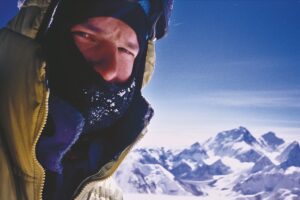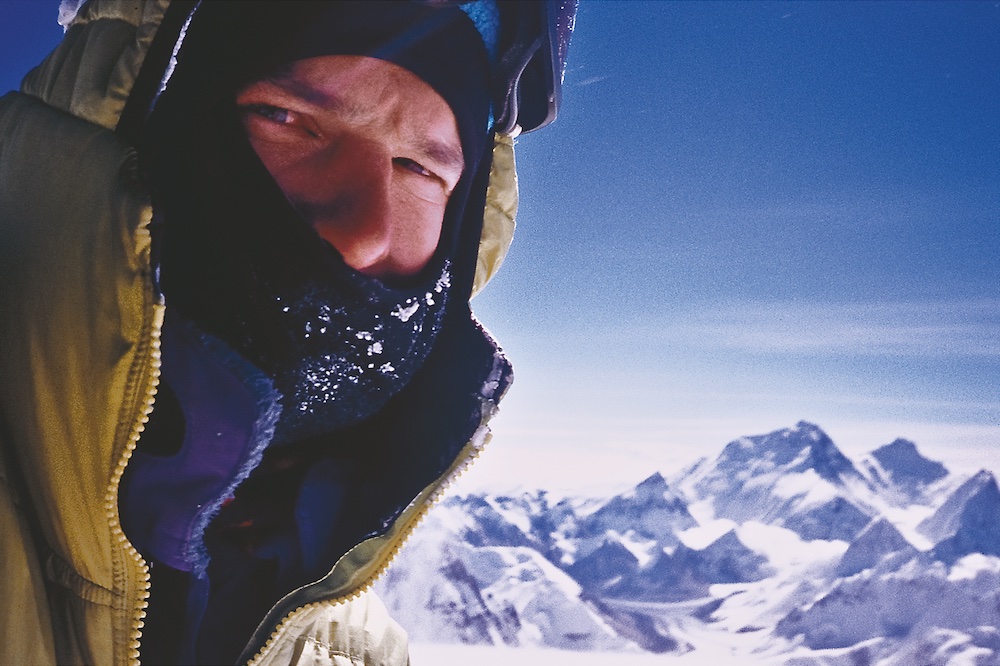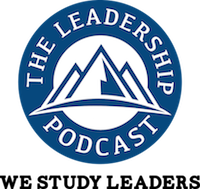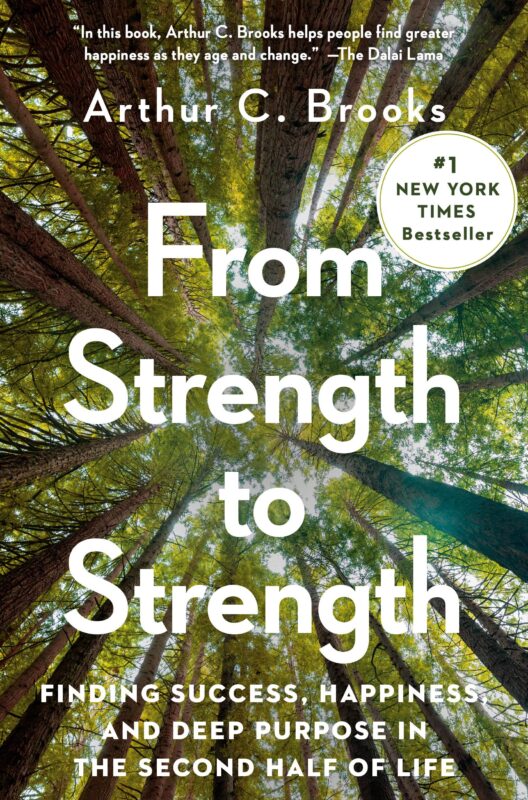
Steve House is the Founder of Uphill Athlete and was a professional climber for 21 years. Renowned mountaineer Reinhold Messner called him the best high-altitude climber in the world. He’s been an ambassador athlete for Patagonia, Grivola, Sportiva, Zeal Optics, and Coros Watches. In 1999 he became only the ninth American to achieve IFMGA certification, the highest level certification to guide all over the world. In this discussion, Steve shares his journey from a nearly fatal fall, to being an entrepreneur and coaching aspirational athletes. Steve talks about how mountain sports separate you from daily distractions to help guide us all on our journeys.
Key Takeaways
[1:53] Steve’s bio. (See at the end of the show notes.)
[4:19] As a professional athlete, there’s not much that’s not in his public bio. He’s almost a private pilot and is less than a month from taking his final practical exam. He describes a recent incredible flight and the energy flying gives him.
[7:09] When Steve was 20, he was studying in college to be an aeronautical engineer. Then he got hijacked by climbing. Now he has the chance to come back and do something he has always loved.
[8:17] In 2010, Steve was doing a training climb preparing for an expedition to do a new route on the west face of K2 with an expert fellow climber. He had a bad fall of around 100 feet. He broke 24 ribs. Two ribs were smashed into innumerable pieces. He had multiple pelvis fractures, knocked all the spinal processes off his vertebrae, and had many internal injuries.
[9:18] Steve lay on his back for about two hours. He knew he had hemopneumothorax. His breathing grew shallow as his chest cavity filled with blood. What came out of that was a lot of self-reflection. He had to come to terms with his drive to become the very best at what he did. That was his mission statement.
[10:45] As Steve reflected, at age 39, he was trying to figure out if he would function again. He had to think about what his values were, and what he cared about and wanted to do. Was it time to change his mission statement? He hadn’t accomplished everything in climbing but he decided he had accomplished enough. He could be proud of what he did do, and he was going to pivot to other values and other goals.
[11:57] In elite sports, you’re boxed off from the world. You eat, sleep, train, and go climb. You save all your energy to be better. It’s how you achieve individual greatness. But you’re not part of a team. Steve saw his crisis as a time to reflect and redirect.
[13:48] Steve thinks that due to the intensity with which he pursued his goals, he required an intense jolt to trigger reflection. Anything less wasn’t going to work. He notes that most of the people he climbed with are dead. That’s how risky and dangerous climbing is. Steve has only a handful of friends from that era that are still alive. Steve realized he was going to join those who were no longer alive if he continued.
[15:29] As a mountain sports trainer, Steve is in a position to help athletes get past the binary narrative of success or failure. There’s a much greater range of possible experiences. We have often seen that the one that came in first cheated or used performance-enhancing substances. The whole paradigm is broken. There is another way to experience sports. Mountain sports do not have a history of competition.
[17:02] Steve would tell his younger self he was always going to feel like an imposter, and that was completely OK, and that everybody else does, too. That feeling was one of the things that were hardest for him to overcome. It goes back to childhood. He was the scrawny little kid that wasn’t good at sports.
[18:49] One of the things that Steve learned from childhood was grit. He loved gritty experiences from a very early age. When he was 10, he backpacked his first 50-mile hike. When he was 11, he climbed Mount Hood. These were just things they did as a family or with his father. He enjoyed it.
[20:37] Steve and his Uphill Athlete team talk about Campbell’s Hero’s Journey paradigm and try to figure out what step their client is on for that journey. The goal is to help them through that one step. Everyone is on the same journey, at a different step.
[23:22] Uphill Athlete doesn’t exist to motivate people but to educate and inspire. Coaching is education and teaching people how they can apply endurance training methodologies and see the changes in their bodies. It takes a couple of months for people to get fully bought in and see their progress. When they get to that epiphany, they are committed to the journey for life and remain in the Uphill Athlete community.
[25:17] Going back to the imposter syndrome, Steve is often surprised that he knows the answer. And the only reason he can know the answer is because he lived it through 20 years of being an athlete. These are things you cannot learn in a physiology textbook.
[26:05] What holds people back is their minds, their fears, their insecurities, and the pieces that they don’t understand, or can’t conceptualize well. Those are the questions Steven can clear up easily, but he is always surprised.
[27:37] Steve tried to teach a man with a Ph.D. in exercise physiology how to coach but it was impossible because he didn’t understand what it felt like in his body to do what was written on the training plan. He couldn’t relate to the people even though he’d run circles around everybody on the science.
[28:27] When Steve interviews people to be coaches, he’s looking for people who have a unique superpower. He doesn’t need 15 people that all know the same thing. He needs people that have different backgrounds and experiences and are willing and eager to share with other people and also learn from them. They have to be far enough along on their journey that they can take feedback constructively.
[29:17] When you have a team that can do all of those things, it’s incredible. Steve’s team includes physical therapists, medical doctors, masters in high altitude physiology, and coaches that have coached every endurance sport you can imagine. They have great energy between them.
[30:29] Some people Steven hires have well-defined superpowers. Some younger people don’t know their superpower. Steven describes how he leverages coaches to develop the superpower in people within a relationship that is entirely a safe place for them to ask those “dumb questions.”
[33:39] Steve has a lot of athletes that do not have a set goal. They want to learn and experience and be in a community of like-minded people. Steve tells them it’s OK not to have an Everest goal. Sometimes it’s enough to engage with people as you learn.
[36:10] Arthur Brooks’s new book, From Strength to Strength, is about finding clarity in the second chapter of life.
[36:47] Steve uses the phrase, “naming the uncertainty.” Write down what you don’t know. Let that sit. People come back to him in a month and say it was great to let that sink in. There are more than two chapters for a lot of people.
[37:38] Mountain sports have an important role to play in people’s journeys. Being in the wilderness in small teams and overcoming obstacles lets the noise go away. So much more happens out there than we give it credit for. People are not getting pings out there moving their bodies through nature and letting their subconscious minds do the work. Steve has solved writer’s block many times with a long walk.
[43:52] Steven’s final thought: “It’s joyful to learn something. It’s joyful to become fitter. It’s joyful to climb a mountain. … Walking up a summit ridge and standing on top of a mountain is ultimately no different than walking into the grocery store and going to the cereal aisle. But what is different is if you’ve been to the top of the mountain, you have an appreciation for all the rest.”
[45:34] Closing quote: Remember, “People say, ‘Are you insane?’ But the most successful climbers are the most calculating, with the most refined sense of risk. They’re hyper-conscious of safety. They’re the least insane people I know.” — Jimmy Chin
The Leadership Podcast is sponsored by W.S. Darley & Company.
Founded in 1908, Darley remains a family owned and operated business, providing the highest quality equipment solutions to our country’s warfighters and firefighters.
Learn more at darley.com and darleydefense.com
Quotable Quotes
“I’m almost a private pilot. … I’m less than a month away. … I just had an amazing flight. … I flew from Slovenia down into Croatia, landed on an island, … flew back to Slovenia, landed … in the mountains in Slovenia, Took off from… Share on X “[After a difficult accomplishment], at the end of the day, you just feel so full of energy and experience and awe.” Share on X “In 2010, I was doing a training climb. I was preparing for an expedition to climb a new route, … and … I fell around 100 feet. I broke 24 ribs, … I had multiple pelvis fractures, … [and] internal injuries. … I lay there for about… Share on X “We don’t always need a crisis. Sometimes it just takes a long walk in the woods. But I think that reassessing our values and making sure that they align with our purpose and our mission is probably something that all of us have to… Share on X “This whole thing of like, ‘If you’re not first, you’re last,’ invalidates pretty much everyone’s experience except one person’s.” Share on X “I’m often surprised that I know the answer. And the only reason I can know the answer is because I lived it through 20 years of being an athlete. These are things you cannot learn in a physiology textbook.” Share on X “I’ve written four books now and I can’t tell you how many times writer’s block has just been solved by a long walk — and with no purpose. A walk with no purpose.” Share on X
These are the books referenced during our conversation with Steve.
Resources Mentioned
- Sponsored by: Darley.com
- Rafti Advisors. LLC
- Self-Reliant Leadership. LLC
- Steve House
- Uphill Athlete
- Vince Anderson
- Central Pillar of the Rupal Face
- Piolet d’Or (Golden Ice Ace)
- Reinhold Messner
- Campbell’s Hero’s Journey
- Krebs Cycle
- Tom Higley
- Crucible Expeditions
Steve House Bio For 21 years, Steve was a professional climber. His most famous ascent was with Vince Anderson. They did the central pillar of the Rupal Face and won the Piolet d’Or (Golden Ice Axe). Steve has done first ascents and new routes in Alaska, the Rockies, and the Alps, and is a famed climber. Renowned mountaineer Reinhold Messner called him the best high-altitude climber in the world. He’s been an ambassador athlete for Patagonia, Grivola, Sportiva, Zeal Optics, and Coros Watches. Steve retired from professional climbing at the end of 2020 to dedicate himself to his family and Uphill Athlete. He currently lives in Austria with his Wife Eva and two sons. Steve has been a professional mountain guide since 1992. In 1999, he became only the ninth American to achieve IFMGA certification, which is the highest level to guide all over the world. There are less than 200 certified in the U.S. to this day. He has guided trips across the world.





Recent Comments